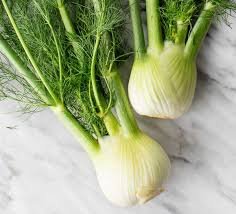You’re halfway through making that delicious recipe—maybe it’s a hearty stew or a fresh salad—and then it hits you: the recipe calls for fennel bulb. Fennel, what now? You check your fridge, your pantry, and even behind that suspicious jar of pickles, but no fennel bulb in sight. Don’t panic or throw your apron across the room just yet. There’s good news—your dish doesn’t have to suffer just because this anise-flavored diva didn’t show up to the party.
Whether you can’t find fennel at your local store, or you simply can’t stand its licorice-like flavor (no judgment—we all have that one food nemesis), there are plenty of tasty stand-ins that can save the day. From humble celery to the ever-versatile onion, you’ve got options. So tie up that apron, keep your cool, and let’s talk about the best substitutes that’ll keep your dish fennel-free but still full of flavor.
-
Anise (Aniseed)
-
Most similar in flavor—sweet, licorice-like.
-
Common in baking and Mediterranean dishes.
-
-
Tarragon
-
Especially French tarragon has a strong licorice note.
-
Great in sauces, chicken dishes, and with eggs.
-
-
Dill
-
Not as sweet, but has a similar feathery texture and mild herbal flavor.
-
Works well as a fennel leaf substitute, though the taste is less anise-like.
-
-
Basil (Thai Basil specifically)
-
Thai basil has a noticeable licorice edge.
-
Often used in Southeast Asian cuisine.
-
-
Chervil
-
A delicate herb with a subtle anise flavor.
-
Often used in French cooking and fine herb blends.
-
Recipe Substitute For Fennel Bulb
Celery (For Crunch and Texture)
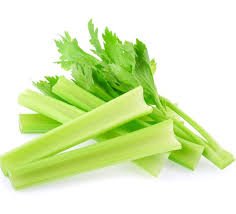
What Can I Substitute For Fennel Bulb In A Recipe primarily for its crisp, refreshing texture, celery stands out as the top contender. Both fennel and celery share a high water content and a satisfying fibrous crunch, making them ideal for raw applications. In a salad or slaw, celery’s mild, slightly peppery flavor won’t compete with other ingredients, allowing the dish’s overall balance to remain intact.
However, celery’s flavor profile differs significantly from fennel’s. While fennel has a natural sweetness and subtle licorice undertones, celery leans more toward earthy and herbaceous notes. To bridge this gap, consider incorporating a small amount of fennel seeds (toasted and lightly crushed) or a splash of citrus (lemon or orange juice) to mimic fennel’s brightness. In cooked dishes like soups and stews, celery softens but retains enough structure to provide a similar mouthfeel to cooked fennel.
For the best results, use celery in the same quantity as fennel (a 1:1 ratio). If you’re making a dish where fennel’s sweetness is important, such as a roasted vegetable medley, you might combine celery with a bit of leek or shallot to enhance depth. The key is to adjust seasoning carefully—since celery lacks fennel’s natural sugars, a pinch of sugar or honey can help replicate that mild sweetness.
Bok Choy or Cabbage (For Bulk and Mild Flavor)
If you’re looking for a vegetable that provides volume and a neutral base without overpowering other ingredients, bok choy or cabbage are excellent fennel substitutes. Both have a layered, slightly crunchy structure that works well in a variety of dishes.
Bok Choy: This leafy green has tender stems and a mild, slightly sweet flavor. It works particularly well in stir-fries, soups, and braised dishes where you want a soft yet structured vegetable. The white stems retain some crunch even after cooking, while the greens wilt nicely, adding a different texture dimension.
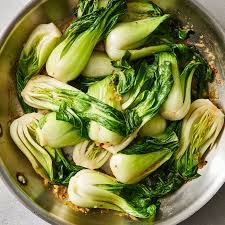
Cabbage: Green, savoy, or Napa cabbage all offer a crisp bite when raw and soften beautifully when cooked. In dishes like coleslaw or fermented preparations (like sauerkraut), cabbage provides the necessary bulk without the anise flavor. If you’re using it in a cooked dish, such as a braise or stew, consider adding a pinch of caraway or dill seeds to introduce a faint licorice-like note.
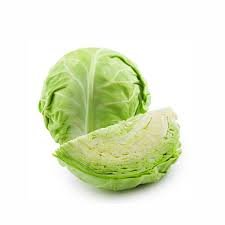
One thing to keep in mind is that both bok choy and cabbage cook faster than fennel. To prevent them from becoming mushy, add them later in the cooking process or reduce the heat slightly. For raw applications, slice them thinly to mimic fennel’s delicate texture.
Leeks or Onions (For Sweetness and Aroma)
Fennel bulb has a natural sweetness that becomes more pronounced when cooked, making leeks and sweet onions great alternatives in recipes where this characteristic is key.
Leeks: These have a delicate, onion-like flavor with a subtle sweetness. They work wonderfully in creamy soups, quiches, and roasted dishes. Since leeks are milder than regular onions, they won’t overpower a dish the way a sharp yellow onion might. However, they do require thorough cleaning—dirt often hides between their layers, so slice them first and rinse well.
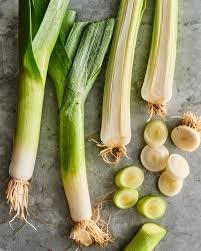
Onions: Sweet varieties like Vidalia or Walla Walla onions caramelize beautifully, developing a deep, rich sweetness similar to roasted fennel. If you’re using them in place of raw fennel (such as in a salad), soak thinly sliced onions in cold water for 10 minutes to mellow their bite. For cooked dishes, slow sautéing or roasting will bring out their natural sugars.
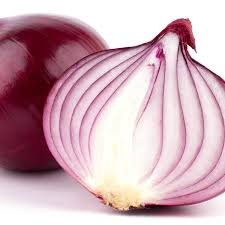
To enhance the anise-like quality, consider adding a pinch of fennel seeds or a few fresh tarragon leaves. This works especially well in French-inspired dishes like braised chicken or fish preparations where fennel’s aromatic qualities are desired.
Anise Seed or Star Anise (For Licorice Flavor)
If the primary reason you’re using fennel is for its distinct licorice-like taste, anise seeds or star anise can provide that flavor in concentrated form.
Anise Seeds: These tiny seeds pack a punch, delivering a sweet, aromatic licorice flavor similar to fennel. They work best in spice blends, baked goods, and slow-cooked dishes where their flavor can infuse. Toast them lightly in a dry pan before use to enhance their aroma.
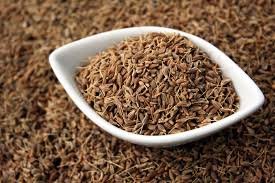
Star Anise: This star-shaped pod has a stronger, more complex flavor with hints of spice and warmth. It’s commonly used in Asian broths, mulled wines, and braised meats. One pod is usually enough for an entire pot of soup or stew—remove it before serving to prevent overpowering the dish.
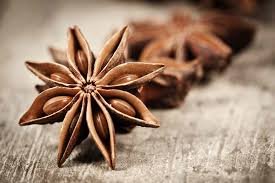
Since these spices don’t provide the bulk or texture of fennel bulb, pair them with a crunchy vegetable like celery or jicama if needed. For example, in a salad, you could use sliced celery for texture and a light sprinkle of crushed anise seeds for flavor.
Dill or Tarragon (For Herbal Anise Notes)
If you’re looking for a fresh, herbal substitute that mimics fennel’s aromatic qualities, dill and tarragon are excellent choices.
Dill: This feathery herb has a bright, grassy flavor with subtle anise undertones. It works particularly well in seafood dishes, yogurt-based sauces, and potato salads. Since dill loses its potency when cooked, add it at the end of cooking or use it as a garnish.
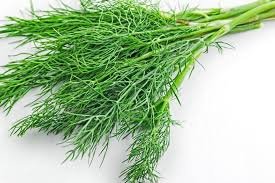
Tarragon: With a stronger licorice-like flavor, tarragon is a fantastic stand-in for fennel in creamy sauces, chicken dishes, and egg-based recipes (like quiches or omelets). A little goes a long way—its flavor is more concentrated than fresh fennel, so use it sparingly.
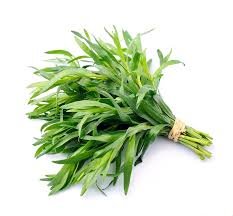
For the best results, pair these herbs with a textural substitute like thinly sliced celery or cucumber to replicate fennel’s dual role in a dish.
Choosing the Right Substitute Based on the Dish
The best fennel substitute depends heavily on how the vegetable is being used in your recipe. Since fennel plays different roles in raw versus cooked preparations, you’ll need to consider both texture and flavor when selecting an alternative. Below, we break down the optimal substitutes for various cooking methods and dish types.
Raw Dishes (Salads, Slaws, and Crudités)
In raw dishes, fennel is prized for its crisp texture and refreshing, slightly sweet anise flavor. When substituting, focus on vegetables that can mimic:
-
Crunchiness (like fennel’s juicy, celery-like bite)
-
Mild sweetness (to balance dressings or acidic components)
-
Aromatic freshness (if the licorice note is important)
Best Substitutes:
-
Celery – The closest match for texture. Its watery crunch works well in salads, but it lacks sweetness.
-
Enhance it with: A drizzle of honey or agave, or add apple/matchstick pears for natural sweetness.
-
-
Bok Choy Stems – Firm and mild, ideal for Asian-inspired slaws.
-
Boost flavor with: A sprinkle of toasted sesame seeds and rice vinegar.
-
-
Jicama – Ultra-crisp and neutral; perfect for Mexican-style salads.
-
Pair with: Lime juice, chili powder, and cilantro for brightness.
-
-
Belgian Endive – Slightly bitter but holds up well in composed salads.
-
Balance with: Creamy dressings or blue cheese.
-
-
Radishes (Daikon or Red Radish) – Peppery crispness adds bite.
-
Soften the spice with: Citrus vinaigrette or yogurt-based dips.
-
Pro Tips for Raw Substitutes:
-
If you miss fennel’s anise flavor, add:
-
A few fennel fronds (the feathery greens) as garnish.
-
A pinch of crushed fennel seeds in the dressing.
-
Fresh tarragon or dill for herbal licorice notes.
-
-
For sweetness, incorporate:
-
Thinly sliced apples, pears, or a touch of orange zest.
-
A light honey-mustard dressing.
-
Cooked Dishes (Soups, Stews, and Roasts)
When cooked, fennel softens and develops a mellow sweetness with caramelized depth. The best substitutes should:
-
Hold their structure (not turn to mush when simmered or roasted).
-
Sweeten naturally when cooked (like fennel does).
-
Absorb surrounding flavors (in soups or braises).
Best Substitutes:
-
Leeks – Sweet and onion-like when sautéed; ideal for creamy soups or quiches.
-
Tip: Use the white/light green parts only; clean thoroughly to remove grit.
-
-
Onions (Sweet Varieties – Vidalia, Walla Walla) – Caramelize beautifully for roasted dishes.
-
Enhance with: A pinch of fennel seeds to mimic fennel’s aroma.
-
-
Celery – Holds up well in long-cooked stews (e.g., Italian soffritto).
-
Boost flavor with: A splash of white wine or lemon juice.
-
-
Carrots or Parsnips – Add natural sweetness when roasted.
-
Pair with: Rosemary or thyme for earthy depth.
-
-
Cabbage (Savoy or Napa) – Softens but retains texture in braises.
-
Add complexity with: Caraway or dill seeds for a faint anise hint.
-
Pro Tips for Cooked Substitutes:
-
For soups/stews, sauté your substitute (leeks, onions, or celery) first to build flavor.
-
If the recipe revolves around fennel’s licorice notes, add:
-
½ tsp toasted fennel seeds (per bulb substituted).
-
A splash of Pernod or ouzo (for French/Mediterranean dishes).
-
A star anise pod (remove before serving).
-
-
For roasted dishes, toss substitutes with olive oil, salt, and a touch of sugar to encourage caramelization.
Special Considerations by Cuisine:
-
Italian (e.g., Fennel Pollen Crusted Fish) – Use celery + fennel seed powder.
-
Indian (e.g., Saunf-based Curries) – Toast anise or cumin seeds for warmth.
-
French (e.g., Provençal Braises) – Leeks + tarragon + pastis (licorice liqueur).
By matching the substitute to both the dish type and cooking method, you can achieve remarkably similar results—even without fennel! Would you like suggestions for a specific recipe?
For Licorice Flavor (Teas, Broths, and Spice Blends)
If you’re making a dish where fennel’s anise flavor is the star (such as herbal teas, broths, or certain sauces), anise seeds, star anise, or even a splash of Pernod or ouzo (anise-flavored liqueurs) can be used. Keep in mind that these are much stronger than fresh fennel, so adjust quantities carefully.
Tips for Adjusting Flavors When Substituting
While finding a textural stand-in for fennel is important, the real art of substitution lies in flavor balancing. Fennel’s unique profile – sweet, aromatic, and slightly licorice-like – requires thoughtful adjustments when using alternatives. Here’s how to perfect your dish when fennel isn’t available:
1. Brightening Mild Substitutes
Vegetables like celery, cabbage, or bok choy provide the right crunch but lack fennel’s complexity. To compensate:
-
Acidity is Key
A squeeze of lemon juice (for Mediterranean dishes) or rice vinegar (for Asian preparations) mimics fennel’s refreshing quality. For raw salads, try:-
1 tsp citrus zest + 2 tsp juice per cup of substitute
-
A splash of champagne vinegar in slaws
-
-
Umami Boosters
Enhance depth in cooked dishes with:-
A teaspoon of white miso paste in soups
-
A Parmesan rind simmered in stews
-
Lightly toasted fennel pollen as a finishing sprinkle
-
2. Recreating the Anise Essence
For that distinctive licorice note:
-
Seed Solutions
Toast 1/2 tsp fennel seeds in a dry pan until fragrant, then:-
Grind finely for spice rubs
-
Steep in warm oil for dressings
-
Tie in cheesecloth for easy removal from soups
-
-
Herbal Alternatives
Herb Best For Quantity Guide Tarragon Cream sauces, eggs 1 tbsp fresh = 1 bulb Chervil Delicate fish dishes 2 tbsp fresh = 1 bulb Dill Yogurt sauces, potatoes 3 tbsp fresh = 1 bulb -
Liquid Licorice
For authentic French flavor:-
Deglaze pans with 1 tbsp Pernod or ouzo
-
Add 1/4 tsp anise extract to baking recipes
-
Steep star anise in cream for desserts
-
3. Building Layered Sweetness
Fennel’s natural sugars emerge when cooked. Compensate with:
-
Caramelization Techniques
-
Roast substitutes at 400°F with a drizzle of honey
-
Slow-cook onions until jammy (45+ minutes)
-
Add 1 tsp apple butter to braising liquids
-
-
Spice Synergy
Create flavor bridges with:-
Coriander seeds (enhances citrus notes)
-
Vanilla bean (rounds out sweetness)
-
Szechuan peppercorns (adds tingling depth)
-
4. Texture Preservation Tricks
Maintain the right mouthfeel:
-
For Crunch Retention
-
Quick-pickle substitutes (1:1 vinegar:water brine)
-
Add jicama or water chestnuts at service
-
Use pectin in dressings to coat vegetables
-
-
For Silky Cooked Texture
-
Purée roasted substitutes with olive oil
-
Finish with a knob of butter off-heat
-
Add a peeled potato to simmering soups
-
5. Cuisine-Specific Adjustments
-
Italian Dishes
-
Add a pinch of orange zest to tomato sauces
-
Use fennel sausage as flavor anchor
-
-
Indian Cooking
-
Toast ajwain seeds with ghee
-
Steep basil seeds in warm milk
-
-
Middle Eastern Flavors
-
Blend mahlab (cherry pit spice) into dips
-
Garnish with za’atar for herbal notes
-
Conclusion
Finding the right substitute for fennel bulb depends on whether you prioritize texture, flavor, or both. Crunchy vegetables like celery, bok choy, and cabbage can mimic fennel’s structure, while leeks and onions bring a similar sweetness. For the signature anise taste, spices like fennel seeds, star anise, or fresh herbs like tarragon and dill can fill in the gaps.
Experimentation is key when substituting ingredients, as different dishes may require different approaches. If you’re making a fresh salad, celery with a sprinkle of fennel fronds might be perfect, whereas a slow-cooked stew might benefit from leeks and a pinch of anise seeds. Keeping a few of these alternatives on hand ensures you’ll never be stuck when a recipe calls for fennel bulb and you don’t have any available.
Ultimately, cooking is about adaptability and creativity. Whether you’re avoiding fennel due to personal preference or simply don’t have it in your kitchen, these substitutes allow you to achieve delicious results without compromising the integrity of your dish. Happy cooking!

